|
|
 

> archived articles
> write for core! be famous!
From the Trenches: Marketing a Design Firm
Part 1: Green Desire
by Joseph Dennis Kelly II
|
| Introduction
From the Trenches is a six-part series that examines the methods contemporary design firms use to communicate their business mission and design philosophy through their marketing initiatives and public relations activities. The first five installments will each feature a firm at a particular stage of evolution. Installments one and two will present design firms under two years old, the first operated by a recent design school graduate, the second by an established industry pro now striking out on his own. Subsequent installments will look at firms between 5-and-7 and 10-and-12 years old, and lastly, a firm with more than 15 years of industry experience. The final installment will sum up the previous five with the intent of discussing the reasons behind the current marketing and publicity methods contemporary design firms use with an eye towards comparing these methods against those employed by firms who are battling for a competitive edge in other innovative industries.
|
|
Green Desire
Jaime Salm is re-imagining the meaning of 21st century urban cool. 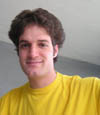 The founder and artistic head of the two-year-old, Philadelphia-based design firm MIO ("my" in Spanish), this 25-year-old Columbian national and 2001 University of the Arts industrial design graduate wants to change the way designers and manufacturers look at materials and processes. He aims to push consumers to re-consider their everyday relationship with products, and to select only those products that are environmentally smart. If he gets his way, the face of urban comfort could radically change. Urbanites may find themselves living in a Bruce Sterling/Viridian-esque dream, in a world populated by physically beautiful products of extraordinary green performance. By instigating and promoting this visionary reality--an alternative process for doing business based on the concept of responsible desire--MIO is advocating an approach to and a theory of design that Salm dubs Green Desire. The founder and artistic head of the two-year-old, Philadelphia-based design firm MIO ("my" in Spanish), this 25-year-old Columbian national and 2001 University of the Arts industrial design graduate wants to change the way designers and manufacturers look at materials and processes. He aims to push consumers to re-consider their everyday relationship with products, and to select only those products that are environmentally smart. If he gets his way, the face of urban comfort could radically change. Urbanites may find themselves living in a Bruce Sterling/Viridian-esque dream, in a world populated by physically beautiful products of extraordinary green performance. By instigating and promoting this visionary reality--an alternative process for doing business based on the concept of responsible desire--MIO is advocating an approach to and a theory of design that Salm dubs Green Desire.
|
|
Finding the Vision
While researching his senior thesis project on sustainable design with two classmates, Salm developed a fascination with recycled molded fiber as a material for home furnishings. The trio investigated possible uses for this material and then produced a small collection of home products that they began selling in two Philadelphia design stores, establishing an immediate and intimate dialogue with consumers. Their work caught the eye of the visual coordinator for the retail chain Anthropologie, a company owned by the Philadelphia-based Urban Outfitters. And shortly after Salm's graduation, company executives approached the trio with a commission to design a line of bowls using recycled molded fiber. What would normally be a dream come true for a young designer was at first a dilemma for Salm.
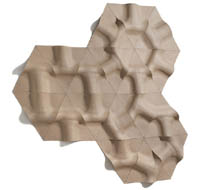 With both of his thesis team members off to accept positions established design firms--one to Wisconsin to join Kohler, the other to Berkeley to join Cheng Design--he was left on his own to either accept or reject the commission. At the time, Salm was considering a full-time position at Manhattan's Material ConneXion, where he interned while in college and achieved much success in building positive relationships for the company with several manufacturers. He also learned the ins-and-outs of compiling a materials library, which has proven an invaluable skill that has significantly impacted his thinking about the relationship between design, material and product. Believing that building his portfolio would prove more valuable in the long run than returning to Material ConneXion, Salm accepted the Anthropologie commission. By project's end, he had a great product branding his name, and $10,000 for his effort. He invested his earnings and set up shop as MIO, a firm he describes as "a design laboratory dedicated to exploring opportunities in the field of sustainable furnishings for urban dwellers." With both of his thesis team members off to accept positions established design firms--one to Wisconsin to join Kohler, the other to Berkeley to join Cheng Design--he was left on his own to either accept or reject the commission. At the time, Salm was considering a full-time position at Manhattan's Material ConneXion, where he interned while in college and achieved much success in building positive relationships for the company with several manufacturers. He also learned the ins-and-outs of compiling a materials library, which has proven an invaluable skill that has significantly impacted his thinking about the relationship between design, material and product. Believing that building his portfolio would prove more valuable in the long run than returning to Material ConneXion, Salm accepted the Anthropologie commission. By project's end, he had a great product branding his name, and $10,000 for his effort. He invested his earnings and set up shop as MIO, a firm he describes as "a design laboratory dedicated to exploring opportunities in the field of sustainable furnishings for urban dwellers."
Knowing that "one job was not going to build a company," Salm began networking with manufacturers. He brought his brother Isaac, a former management professional with Kimberly-Clark, on board to handle the firm's business operations as a part-time salaried employee while Salm focused on the 60-to-70-hour-a-week job of churning out designs that he wanted to put into the hands of consumers. Unfortunately, his passion and expectations exceeded the initial interests of the manufacturers and prospective clients he contacted. During MIO's first six months, before he received his next commission, Salm cultivated sacred business values: patience and persistence. His embrace of these values has also motivated Salm to re-evaluate the quality of his formal presentations and the focus of MIO's message and its process of doing business. Hands-on experience and self-study helped Salm generate more effective proposals. This also helped him define MIO's industry role as a bridge--connecting innovative design approaches using sustainable materials, with conventional market expectations regarding product performance.
|
|
Communicating the Vision
Salm recognized early on in the formation of MIO that publicity was the key to forging a brand identity. College courses showed him how to develop a press packet, assemble a press list and build relationships with media professionals. His tireless efforts to put press kits into the hands of key editors have generated recent profiles in I.D. (International Design), Interior Design, Azure and Contract magazines. 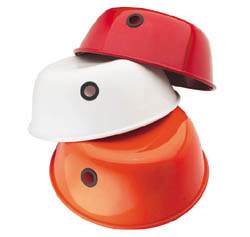 While word-of-mouth and direct networking have been best for engaging prospective clients, the press coverage has proven integral in establishing MIO's professional credibility and generating public awareness about its Green Desire philosophy. This came with a price and an invaluable lesson. While word-of-mouth and direct networking have been best for engaging prospective clients, the press coverage has proven integral in establishing MIO's professional credibility and generating public awareness about its Green Desire philosophy. This came with a price and an invaluable lesson.
Salm's originally outsourced most of the firm's public relations work, spending more than $1,000 last year to develop postcards and professional presentation materials. After recently taking charge of this process, he hopes to cut marketing spending by nearly 50%. As MIO moves into its third year, and knowing after trial-and-error where money was wasted in the past, Salm is focused on spending more intelligently and reducing costs. This saved money will enable Mio, during 2004, to get more products into more stores. And this, Salm hopes, will increase sales in the short run and build consumer familiarity in the long run. MIO's output for the next five years will focus on home furnishings because, Salm notes, a design firm must be good at one thing before moving on to diversify its collection. By its fifth year, MIO could be introducing products involving fashion and accessories, but only after the company has generated a significant market presence, established a brand that instills consumer confidence and developed a reputation as a company that puts people first. For Salm, design is, at the end of the day, all about people and how they respond to products.
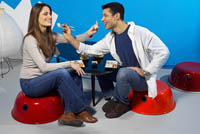 Slavko Milekic, associate professor of Cognitive Science and Digital Design at The University of the Arts, notes that Salm, one of his top students, is absorbed with thinking about the relationship between humans and their environment. Crediting the cognitive approach he teaches--developed by American psychologist James Gibson--as an inspiration for Salm, he says the young designer continuously looks "beyond usability issues, beyond functionality…[Salm] is not satisfied with being able to recognize what the right thing is. He is extremely focused on trying to find out what makes an object work and what [determines] its value." Slavko Milekic, associate professor of Cognitive Science and Digital Design at The University of the Arts, notes that Salm, one of his top students, is absorbed with thinking about the relationship between humans and their environment. Crediting the cognitive approach he teaches--developed by American psychologist James Gibson--as an inspiration for Salm, he says the young designer continuously looks "beyond usability issues, beyond functionality…[Salm] is not satisfied with being able to recognize what the right thing is. He is extremely focused on trying to find out what makes an object work and what [determines] its value."
|
|
Evolving the Vision
Though Salm presented at two previous ICFFs, once with his thesis team and last year with MIO, he's focused this year on establishing MIO in the industry. His goals are to cultivate more contacts for consulting work and develop new relationships that will help him increase the distribution of MIO products. 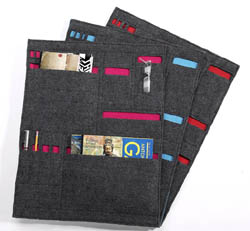 Last year, Salm designed a booth that sported expensive green design elements to attract attention. MIO also offered visitors fortune cookies with their web site (www.mioculture.com) listed inside. This year Salm is going for a look that conveys a more sophisticated urban identity. Instead of just another trade show stall, Booth #670 will be transformed into a mock storefront with strong contrasts of bold colors, 3D wallpaper and mushroom lamps. The idea is to create a psychedelic yet relaxed environment that resembles, in spirit, the mock vignettes found in IKEA showrooms--Salm's paradigm for product presentation, spaces where people can experience products for themselves in seemingly personal places. "I want to present my products [in a way] that [allows] people to interact [with them]," says Salm, who believes that people come to ICFF to see what's new, not necessary to buy. ICFF attendees, he has found, generally buy three months later. He says MIO's plan is to create a booth that people will remember long after they leave the 2004 ICFF. Last year, Salm designed a booth that sported expensive green design elements to attract attention. MIO also offered visitors fortune cookies with their web site (www.mioculture.com) listed inside. This year Salm is going for a look that conveys a more sophisticated urban identity. Instead of just another trade show stall, Booth #670 will be transformed into a mock storefront with strong contrasts of bold colors, 3D wallpaper and mushroom lamps. The idea is to create a psychedelic yet relaxed environment that resembles, in spirit, the mock vignettes found in IKEA showrooms--Salm's paradigm for product presentation, spaces where people can experience products for themselves in seemingly personal places. "I want to present my products [in a way] that [allows] people to interact [with them]," says Salm, who believes that people come to ICFF to see what's new, not necessary to buy. ICFF attendees, he has found, generally buy three months later. He says MIO's plan is to create a booth that people will remember long after they leave the 2004 ICFF.
A key element to the success of MIO's ICFF presentation, and the launch of its five new products alongside its other pieces, is its annual season kick-off exhibition in Philadelphia. Held in an as yet undetermined storefront in the city's gallery district--its Old City neighborhood--and opening on April 2, 2004 as part of the Old City's monthly First Friday festival that opens nearly all of the city's gallery shows, this presentation will create an intimate setting where visitors can test market the products in a real world setting. 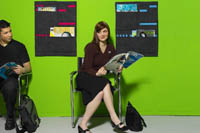 Public response could shape subsequent generations of the product. Salm is quick to recognize that his living in Philadelphia is an important component to MIO's successful evolution: the city's established and quickly expanding network of design and art industry professionals and resources--including its abundance of eager and passionate design school students/interns and its reasonable cost-of-living--provides him with the inspiration and motivation to experiment without the restrictive pressure to conform to conventional expectations of professional success. Public response could shape subsequent generations of the product. Salm is quick to recognize that his living in Philadelphia is an important component to MIO's successful evolution: the city's established and quickly expanding network of design and art industry professionals and resources--including its abundance of eager and passionate design school students/interns and its reasonable cost-of-living--provides him with the inspiration and motivation to experiment without the restrictive pressure to conform to conventional expectations of professional success.
Though MIO has often struggled to obtain work and public attention during its first two years--having had two clients its first year and four its second--Salm's patience and persistence are now reaping rewards. MIO is working on five projects for two clients while Salm discusses plans for several other projects with five new clients. "Professional success is an ongoing endeavor," says Salm. "If I maintain the ability [to] constantly challenge the way I think and [the way I] respond to these new thoughts, then I can consider myself a successful designer. As a businessperson, I feel confident that we are on the right track, but I know that we have a long way to go to achieve our full potential." Given the success that Salm has generated in defining his vision for MIO and in generating market awareness of his company and his product line thus far, this firm may well come to stand as an inspiration for young designers seeking to build careers as design-entrepreneurs.
|
Philadelphia-based journalist Joseph Dennis Kelly II specializes in covering architecture and design. A graduate of the University of the Arts and the Home & Design editor of Philadelphia Style magazine, his work has appeared in I.D. (International Design), Metropolis (forthcoming), Architectural Record, Architecture, World Architecture, Interior Design and Clear. He also provides strategic writing and editing services to clients working internationally in the architectural and design fields. He can be reached at jdkelly.kellycomm@verizon.net
> back to top
> back to core
|
|



![]()
 The founder and artistic head of the two-year-old, Philadelphia-based design firm MIO ("my" in Spanish), this 25-year-old Columbian national and 2001 University of the Arts industrial design graduate wants to change the way designers and manufacturers look at materials and processes. He aims to push consumers to re-consider their everyday relationship with products, and to select only those products that are environmentally smart. If he gets his way, the face of urban comfort could radically change. Urbanites may find themselves living in a Bruce Sterling/Viridian-esque dream, in a world populated by physically beautiful products of extraordinary green performance. By instigating and promoting this visionary reality--an alternative process for doing business based on the concept of responsible desire--MIO is advocating an approach to and a theory of design that Salm dubs Green Desire.
The founder and artistic head of the two-year-old, Philadelphia-based design firm MIO ("my" in Spanish), this 25-year-old Columbian national and 2001 University of the Arts industrial design graduate wants to change the way designers and manufacturers look at materials and processes. He aims to push consumers to re-consider their everyday relationship with products, and to select only those products that are environmentally smart. If he gets his way, the face of urban comfort could radically change. Urbanites may find themselves living in a Bruce Sterling/Viridian-esque dream, in a world populated by physically beautiful products of extraordinary green performance. By instigating and promoting this visionary reality--an alternative process for doing business based on the concept of responsible desire--MIO is advocating an approach to and a theory of design that Salm dubs Green Desire. 



